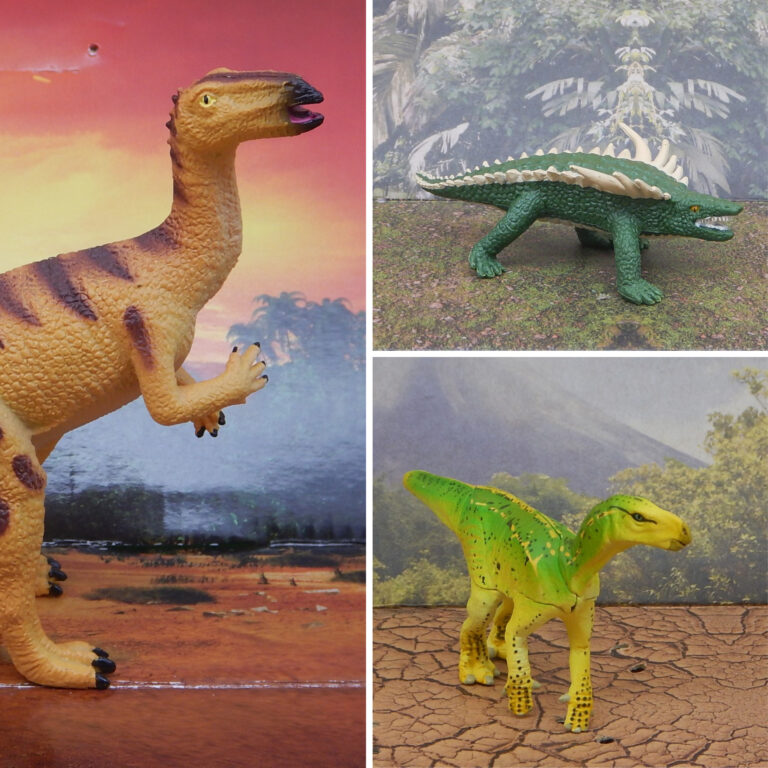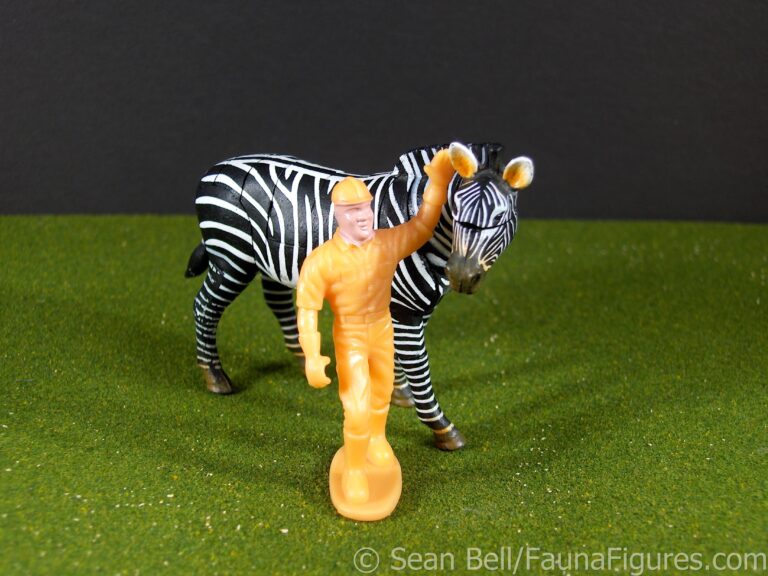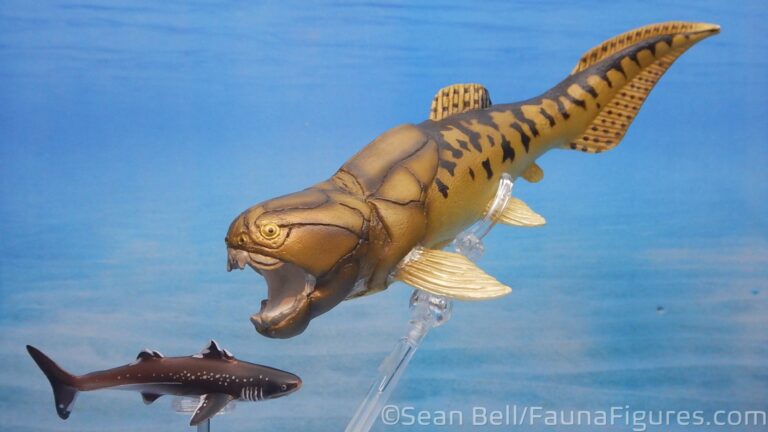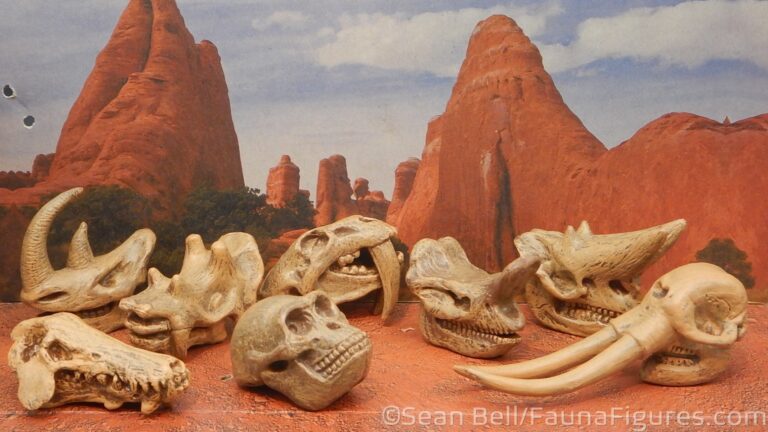Oooh! Prehistoric mammal FigureFrenzy today! And quite the range of figures and companies while we’re at it! Let’s see!
Starlux Deinotherium

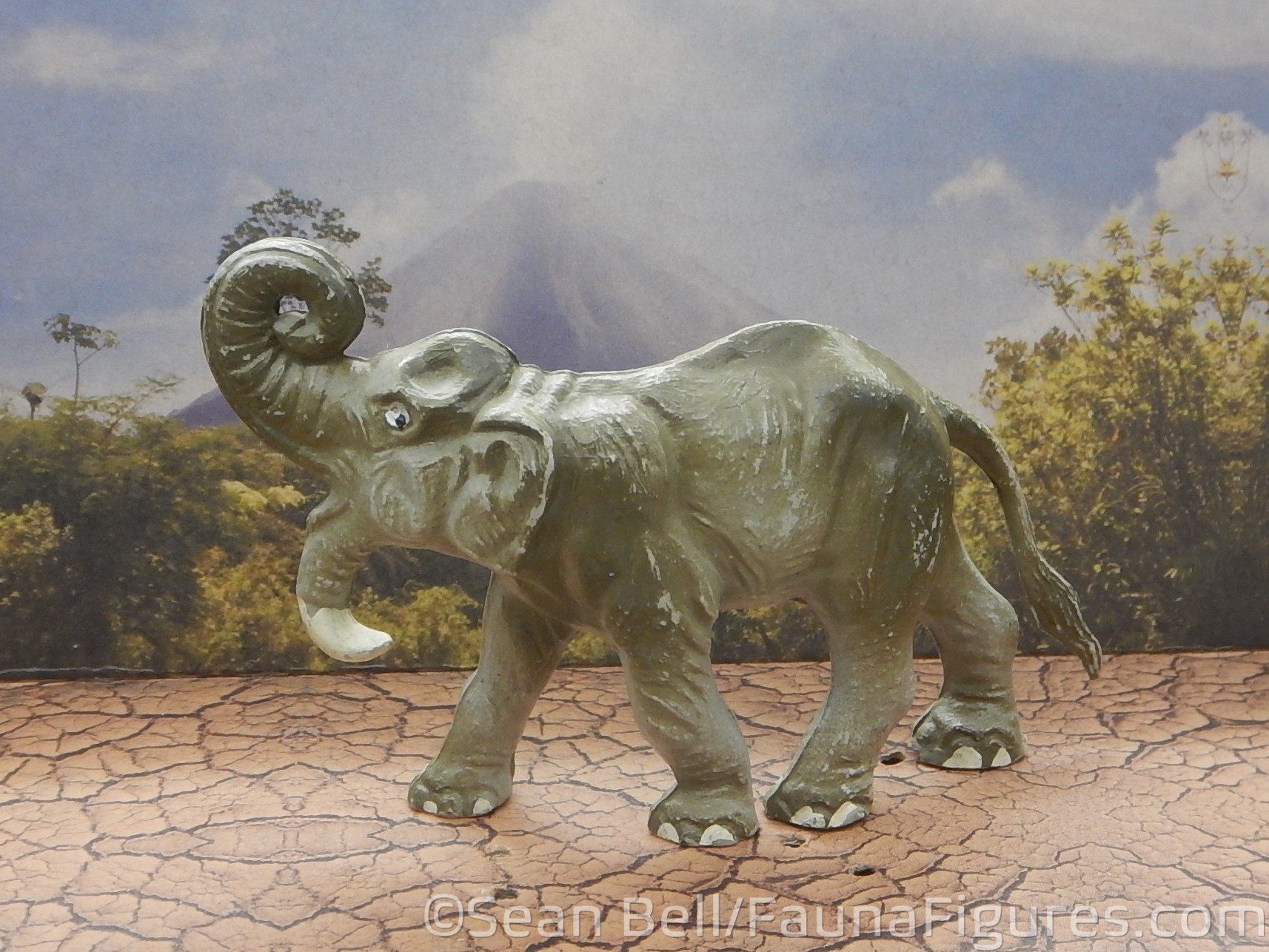

Our first figure is the elephant-like Deinotherium Starlux, released in 1973 with the item number FS40044. It was probably the first decent representative figure of the genus, and some of that is pretty clear. Unlike more current models (I think most of the current major brands have versions), this one is very clearly a slightly altered Asian elephant. It isn’t terrible looking, but seeing as it is not actually part of the modern ‘elephant’ lineage, there is some room for interpretation. Plus, deinotheres’ skeleton were pretty different from an elephant’s skeleton (which is why every version seems to look different!) Still a really nice, figure, it was (like most Starlux) tough to track down from France.
Safari Ltd Prehistoric Life toob Neanderthals
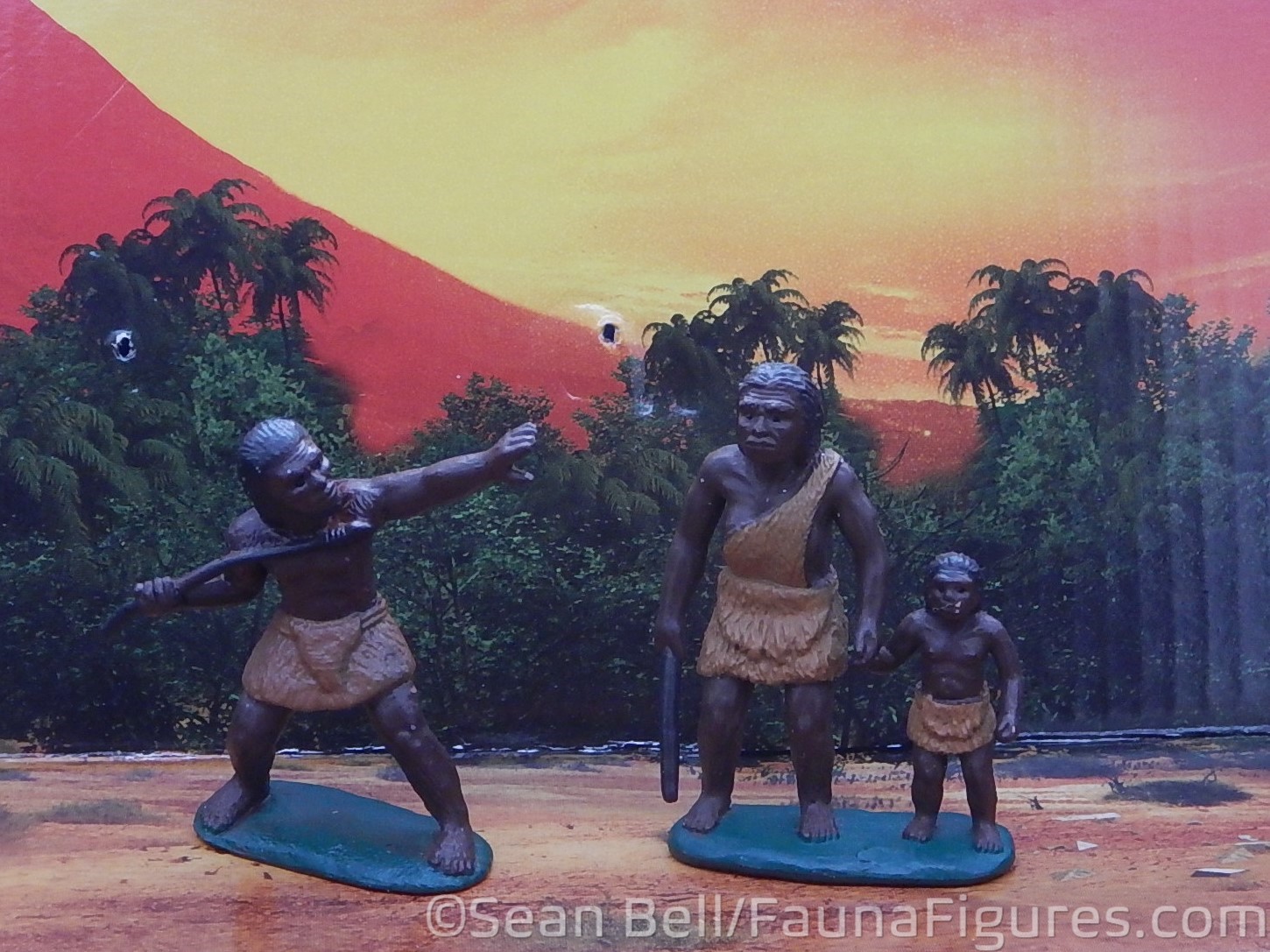
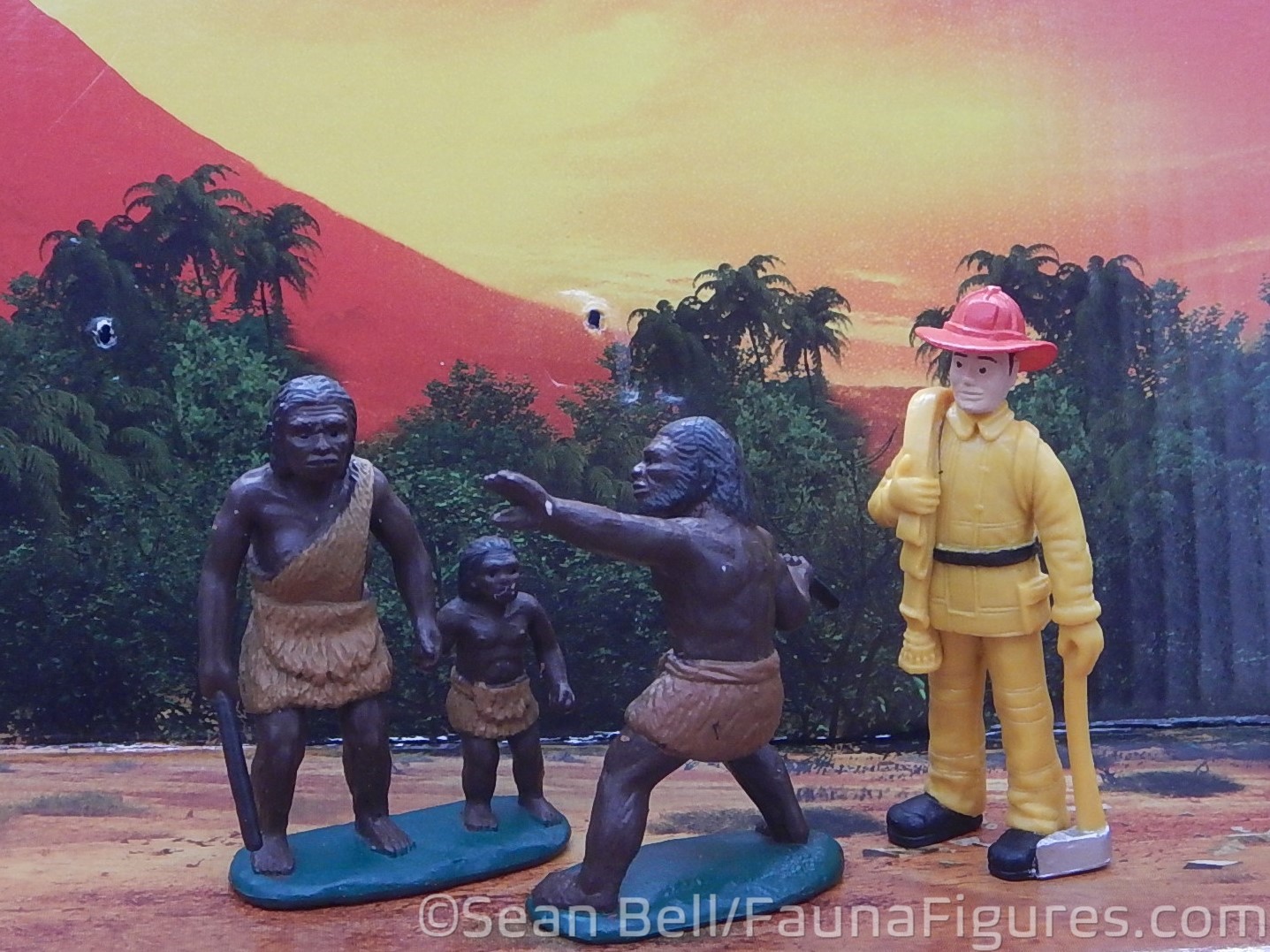
Not long ago, I looked at a pair of Arsinoitherium figures from the Safari Prehistoric Life toob, and here we are with a couple more–the male (standalone) and female+child Homo sapiens neanderthalensis figures. Unlike the earlier one, I don’t think there was much difference between these originals and the second version I got. But based on the Safari site, the fiugres are now more of a ghostly pale grey…not sure how I feel about that. They have a lot of character, and Safari did a good job of giving them the stocky bodies and heavy skulls you’d expect from one of our closest relative species. They’re nice to have, although I’m not big on ‘caveman’ figures in my collection. Also, not sure why I haven’t used them as scale models before…it would kind of make sense! If you need them…try to find an older toob. I’m sure they’re out there.
Bullyland Andrewsarchus (AKA Early Predator)

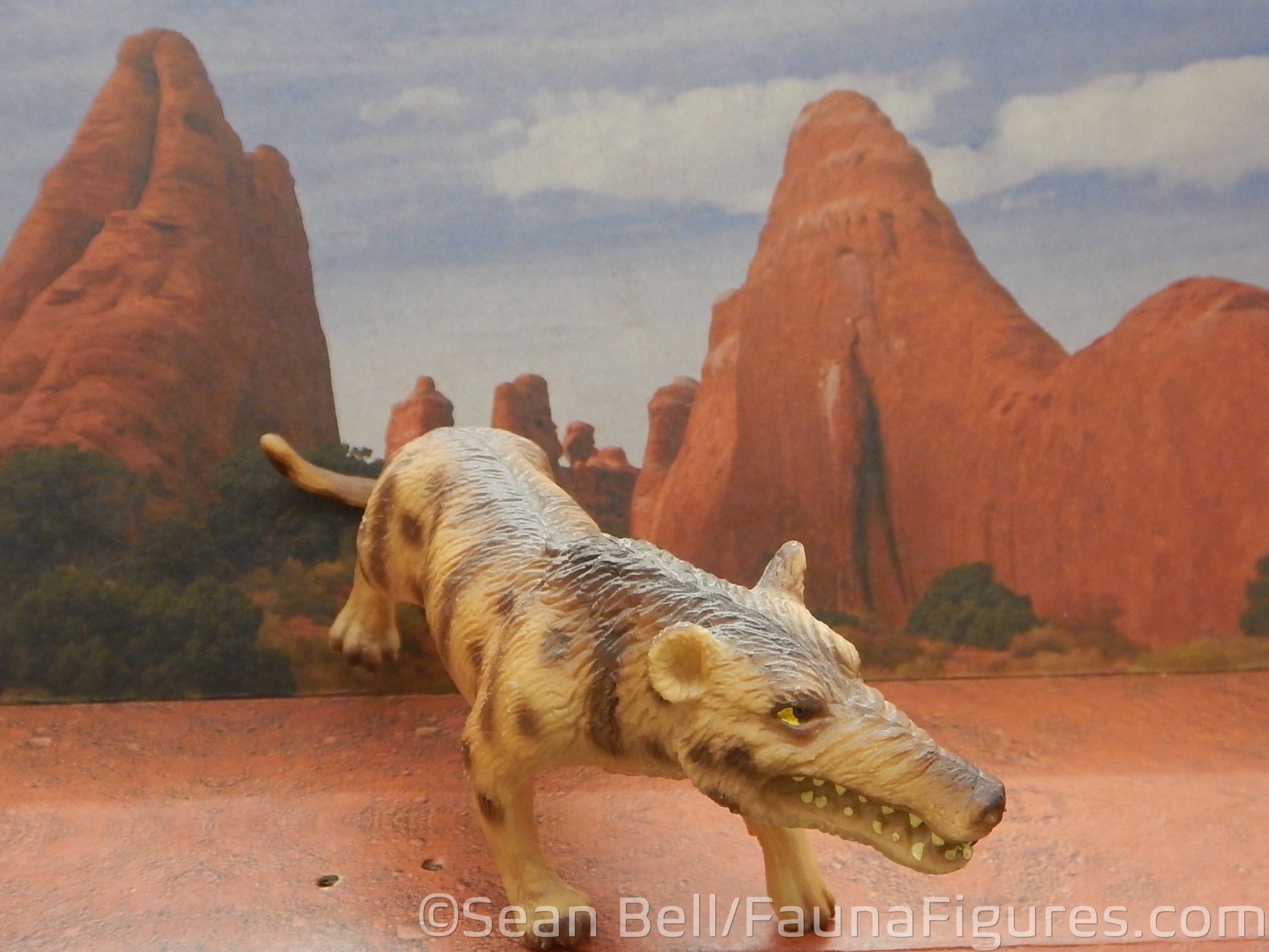

This one is the Bullyland Andrewsarchus, originally from their Stuttgart Museum Prehistoric mammals series. The depiction here is clearly a function of when it was first produced, in the early 2000s (maybe lastest 1990s). Back then, it was considered a ‘mesonychid condylarth’, a group of primitive hoofed predators from a stem or extinct lineage (hence the original series name of ‘Early Predator’). More current work indicates that it may actually be part of the stem lineage of the ‘whippomorpha’–the clade that includes the hippos, whales, and entelodonts! More current research not only places it with these animals, but puts Andrewsarchus within the entelodont line! So while probably still a giant hoofed predator (bigger than Daeodon!) it is closer to only some of the modern hoofed animals. The figure itself is a really nice model even if a little out of date (the current CollectA is probably the most modern take) but can be difficult to find; easier as it was re-released in the late 2010s but discontinued shortly thereafter.
Ral Partha DnD Beastmasters Chasmaporthetes



One of my tiny favorites, another Beastmasters figure from Ral Partha. This time, it is the running or hunting hyena Chasmaporthetes. Oddly, of the many extinct hyena species…this is one of only a few to ever be made as a figure (there is one other in the Beastmasters). At the time I bought this, about 1998, it was super exciting because hyena models overall were uncommon, as were most prehistoric mammal models (the interent was only just becoming useful) and finding this odd species, of which I was aware, made it worth the trek to the weird gaming store (there have been improvements in many areas…) This one is made even more exciting because Chasmaporthetes is the only hyaenid found in North America (although known from much of the ‘old world’, and has even been found in Canada itself. I knew about the material, although for the longest time it was labelled as Adcrocuta but it was definitely a hyena! A great figure, and it would be nice to add to an (early) Ice Age animal (or earlier, the genus was around for a while); the scale is even appropriate for most mammal models. It is of course not currently in production, although it was recently reissued for a while and the moulds probably still exist. So it could be possible to track down.

